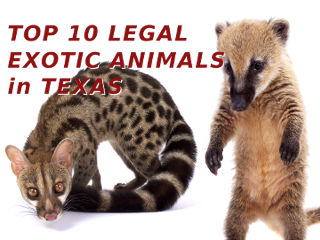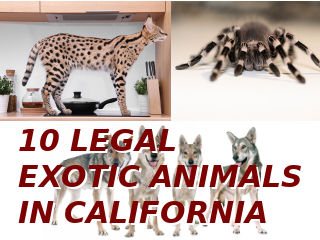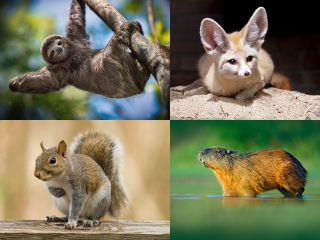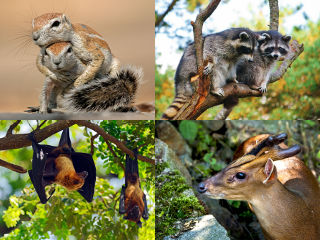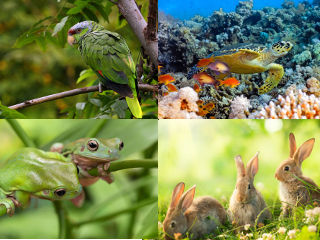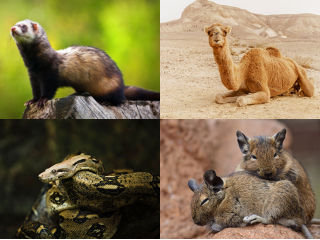In Washington state, you can generally have most common domestic animals as pets. That being said, however, there are also many exotic animals that are prohibited due to the danger that they can present to humans. These are usually quite obvious in that they include animals like lions, tigers, bears, and most primates. However, even with these restrictions, there are still many exotic animals that are perfectly legal to own in Washington state. It is always a good idea to check with your local government and animal control agency to determine any specific restrictions or requirements for owning a pet in your area. If you want to own exotic animals in Washington, it is also important to consider the needs and welfare of the animal when deciding whether to keep it as a pet.
Capybara
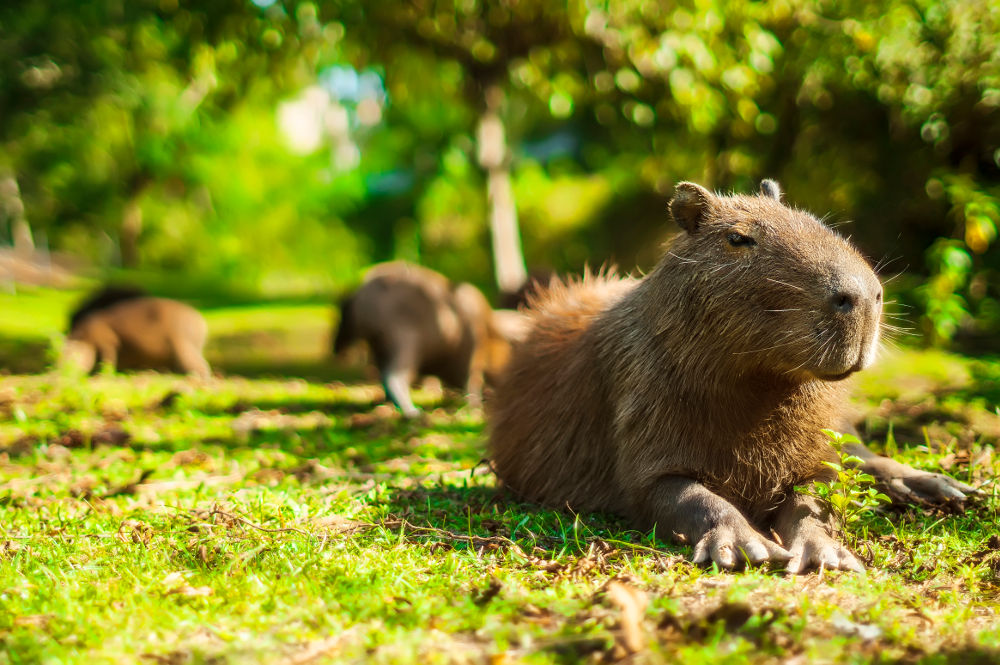
Capybaras are large, semi-aquatic rodents native to South America. They are social animals and often live in groups near bodies of water. They are herbivores and primarily feed on grasses and other vegetation. Capybaras are known for their docile nature and are often kept as pets or used as therapy animals. They are also used in scientific research and in the fur industry.
Capybaras are closely related to guinea pigs and are the largest living rodents in the world. They can grow up to 4 feet long and weigh up to 140 pounds. Capybaras are social animals and need to live with other capybaras or at least have regular interaction with humans. They also need plenty of space to roam and access to water, as they are semi-aquatic animals. In addition, they need a specialized diet that includes hay, grass, and a small number of vegetables. They can be expensive to care for and may require specialized veterinary care.
They do best in female pairs or male and female pairs. Males kept together, even if neutered, can display aggressive tendencies toward one another. They are not usually known for being aggressive animals but can be a bit shy and will use their teeth to defend themselves if they feel threatened. It may take some time for them to get used to humans, but they usually do especially well if they are hand-reared.
Ostrich
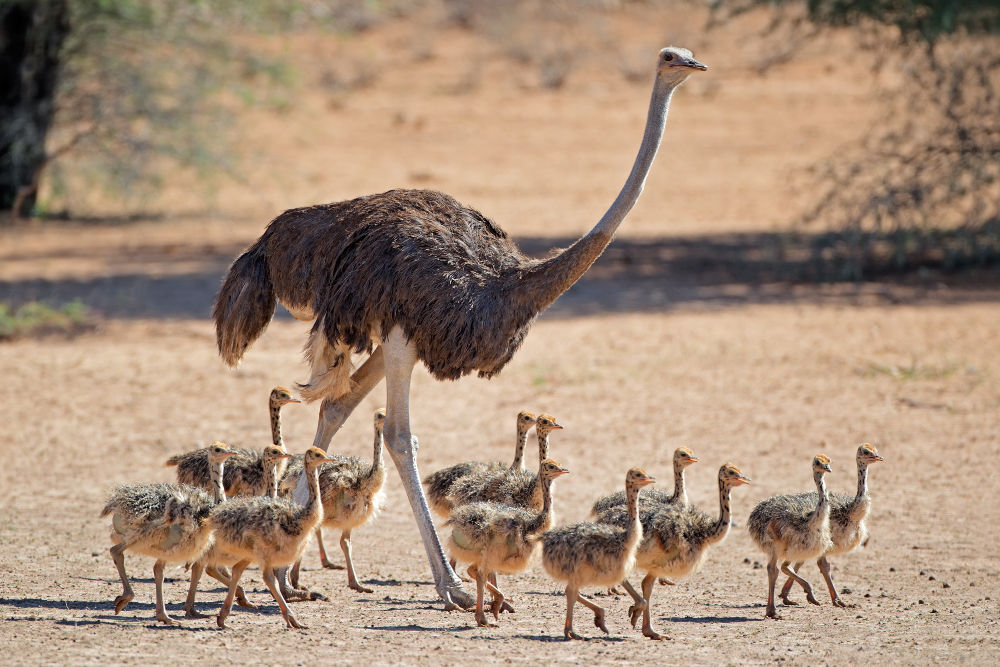
Ostriches are large, flightless birds that are native to Africa and are not domesticated. They can grow up to 9 feet tall and can weigh up to 150 pounds, so they require a lot of space and specialized care. They are also very fast runners and can be dangerous if they feel threatened. In the wild, ostriches typically live in flocks of 5-50 birds, although larger groups can form during the breeding season or when food is abundant. Within a flock, ostriches establish a social hierarchy, with a dominant male leading the group and females and submissive males following. Ostriches are known to be very social animals, and they often engage in behaviors such as preening, grooming, and mutual protection. In captivity, ostriches may also form social bonds and can be kept with other ostrich-like birds, such as emus. However, it is important to provide these birds with enough space to move around and interact with each other, as they can become aggressive or stressed if they are kept in crowded or confined conditions.
In the wild, their diet consists of a variety of foods, including seeds, fruit, leaves, flowers, insects, lizards, and small mammals. They are also known to occasionally eat small bones and other hard objects, which helps to grind their food in their gizzard (a muscular part of the stomach). In captivity, ostriches can be fed a diet of commercial ostrich feed, which is formulated to provide them with the nutrients they need. This feed can be supplemented with fresh fruits and vegetables, as well as small amounts of protein sources such as cooked eggs or lean meat. It is important to provide ostriches with a balanced and varied diet to ensure their health and well-being.
Emu

Emus are interesting and unique animals, but they may not be the most suitable pets for everyone. Emus are native to Australia and are the largest native bird there. They are known for their long legs and neck, and they can run at speeds of up to 50 km/hr (31 mph). In the wild, emus are known to be strong and resilient, and they can survive in a variety of habitats.
However, keeping an emu as a pet requires a significant amount of time, space, and resources. Emus can grow to be up to 6 feet tall and weigh up to 120 pounds, so they need a lot of space to roam and exercise. They also have specific dietary needs and can be prone to certain health problems if not properly cared for. Additionally, emus can be quite loud and may not be suitable for people who live in close proximity to their neighbors. Emus are omnivorous birds, which means that they eat both plants and animals as part of their diet. In the wild, emus primarily eat seeds, fruit, insects, and other small invertebrates. They may also occasionally consume small mammals or reptiles.
In captivity, emus can be fed a diet that includes a variety of grains, vegetables, and protein sources such as cooked beans, lentils, and tofu. It is important to provide a balanced diet that meets the emu's nutritional needs, which can vary depending on the animal's age, size, and activity level. They also need companionship, so it’s best to have at least two emus.
Sugar gliders
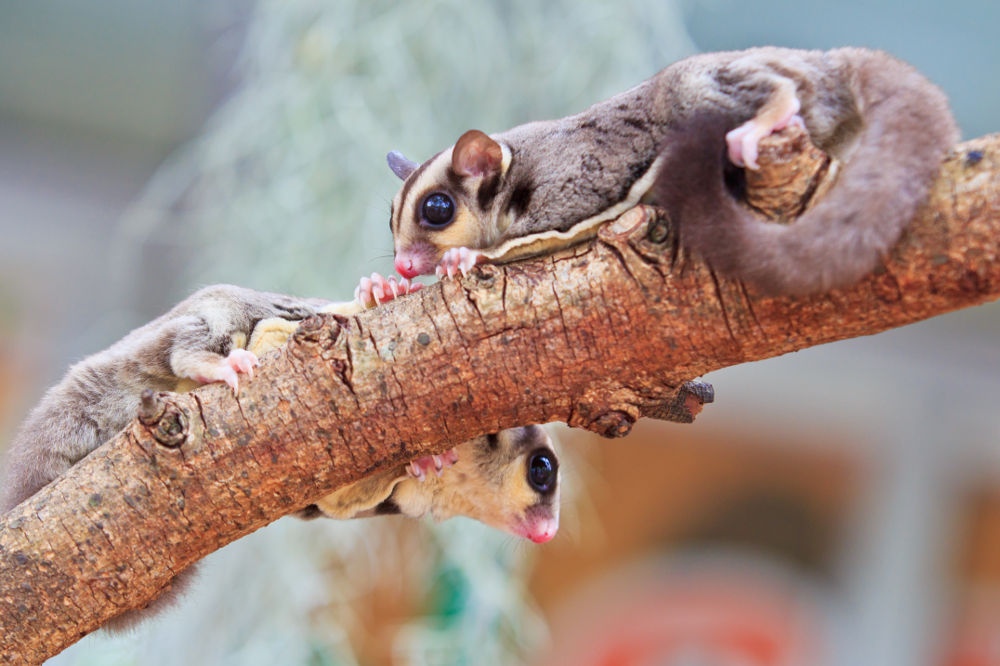
Sugar gliders are small marsupials native to Australia, Indonesia, and Papua New Guinea. They are found in a variety of habitats, including forests, woodlands, and grasslands, and are known for their ability to glide through the air using a patagium, a membranous wing-like structure that stretches between their front and hind legs. Sugar gliders are social animals and live in groups called colonies, which typically consist of a dominant male, several females, and their young. They are omnivorous, feeding on insects, nectar, and fruit in the wild.
In recent years, sugar gliders have become popular pets. Sugar gliders can be friendly and social with their caregivers, but they can also be timid and may take some time to adjust to new people and environments. Like any animal, they will be more comfortable and responsive when they are treated with kindness and respect and when they are given sufficient time to acclimate to their new surroundings. It is important to handle sugar gliders gently and to provide them with a safe and secure environment.
It is also important to keep in mind that sugar gliders are not domesticated animals, and they can exhibit behavior that is natural for them but may not be desirable in a pet. For example, they may be active and vocal at night, which can be disruptive for some people. They may also mark their territory with urine, which can have a strong odor.Coatimundi
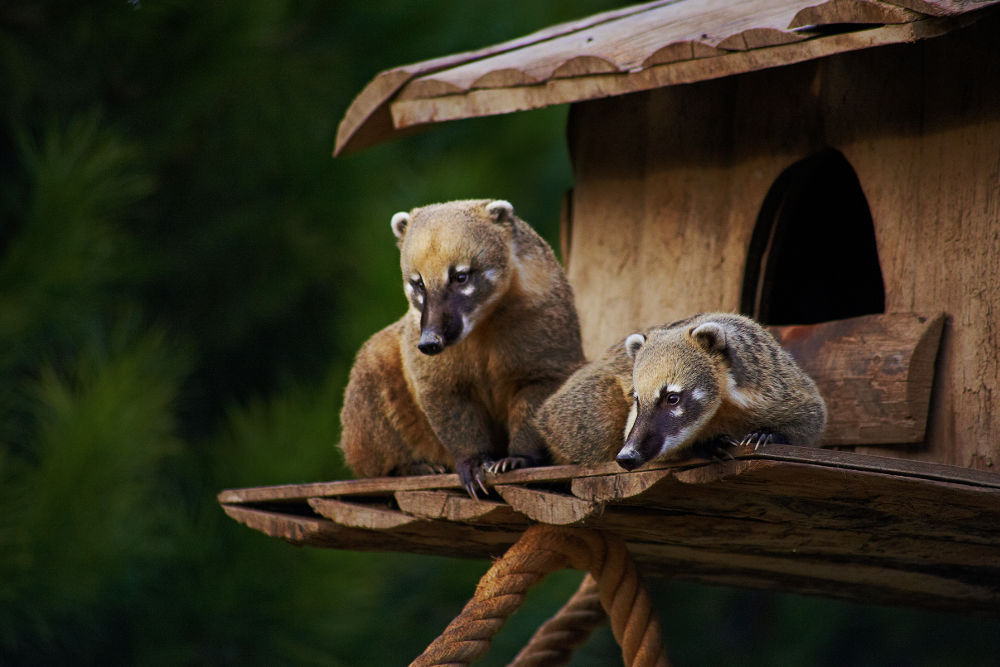
Coatis, also known as coatimundis, are small to medium-sized mammals native to South and Central America. They are related to raccoons and are known for their long, flexible noses and bushy tails. Coatis are intelligent and energetic animals, and they can be quite playful and affectionate with their human caretakers. They require a lot of space to run and play, as well as a high-quality diet and proper medical care.
Coatis can also be quite destructive, as they have a tendency to chew on things and can be quite agile and sneaky when it comes to getting into areas they're not supposed to be. In addition, coatis can be aggressive and can bite if they feel threatened or are not properly socialized. They can also be difficult to litter train, and they may not be suitable for households with small children or other pets. They are intelligent animals with complex social behaviors. They are highly adaptable and are known to use their intelligence and problem-solving skills to find food and shelter in their natural habitat. Coati are also known to be curious and playful, and they can be trained to do a variety of tasks in captivity.
Kinkajous
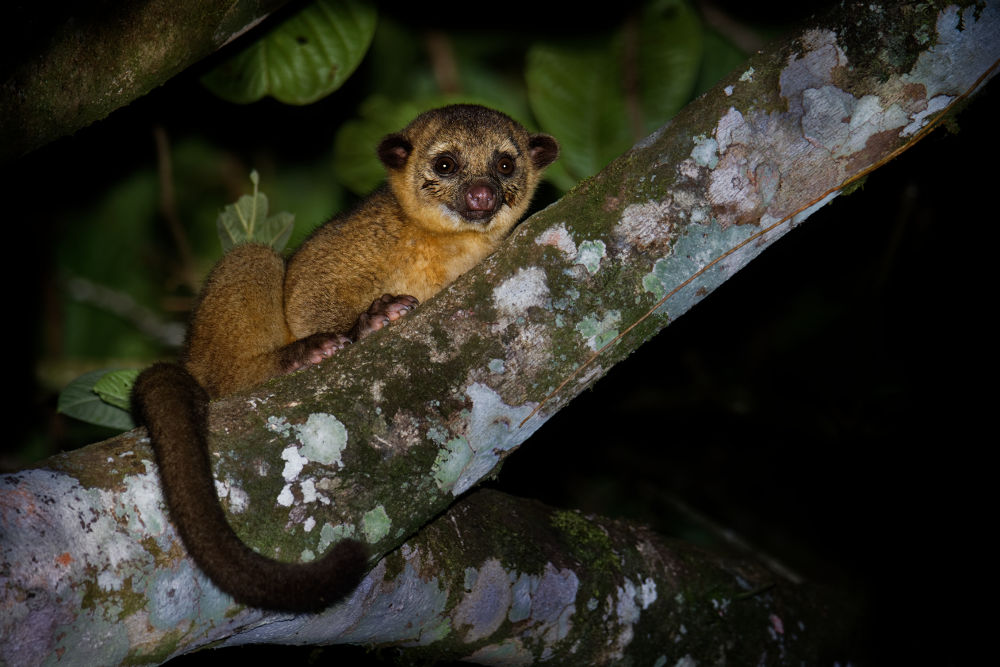
Kinkajous, also known as honey bears, are small mammals native to the rainforests of Central and South America. They are closely related to raccoons and are known for their long, prehensile tails and their ability to climb trees. Kinkajous are nocturnal animals and are mostly active at night. They are omnivorous and feed on a variety of foods in the wild, including fruit, insects, nectar, and small vertebrates. In captivity, they may be fed a diet of commercial feed, fresh fruits and vegetables, and insects. Kinkajous are social animals and live in groups in the wild.
In captivity, they may benefit from the company of other kinkajous, but this can be difficult to arrange and requires careful planning and consideration of the animals' needs. Kinkajous are agile climbers and require a large, secure enclosure with plenty of vertical space to climb and explore. They also need a variety of toys and other stimuli to keep them mentally and physically active. However, kinkajous can be aggressive or defensive when they feel threatened and may be prone to biting or scratching if they are not handled properly or if they are feeling stressed or uncomfortable. Kinkajous are sensitive to temperature and humidity changes and may be prone to certain health problems if their environment is not properly maintained. They may also be at risk of injury if they are allowed to roam freely in a domestic setting.
Since they are native to the rainforests of Central and South America, they are adapted to a tropical climate. They may not thrive in a cooler, drier environment and may require specialized care to maintain their health and well-being. Although kinkajous may be cute and exotic, they are not suitable as pets for most people. Kinkajous are wild animals, and as such, they have complex physical, social, and behavioral needs that can be difficult to meet in a domestic setting. They can be difficult to care for and require a significant amount of time, space, and resources.
Ferrets
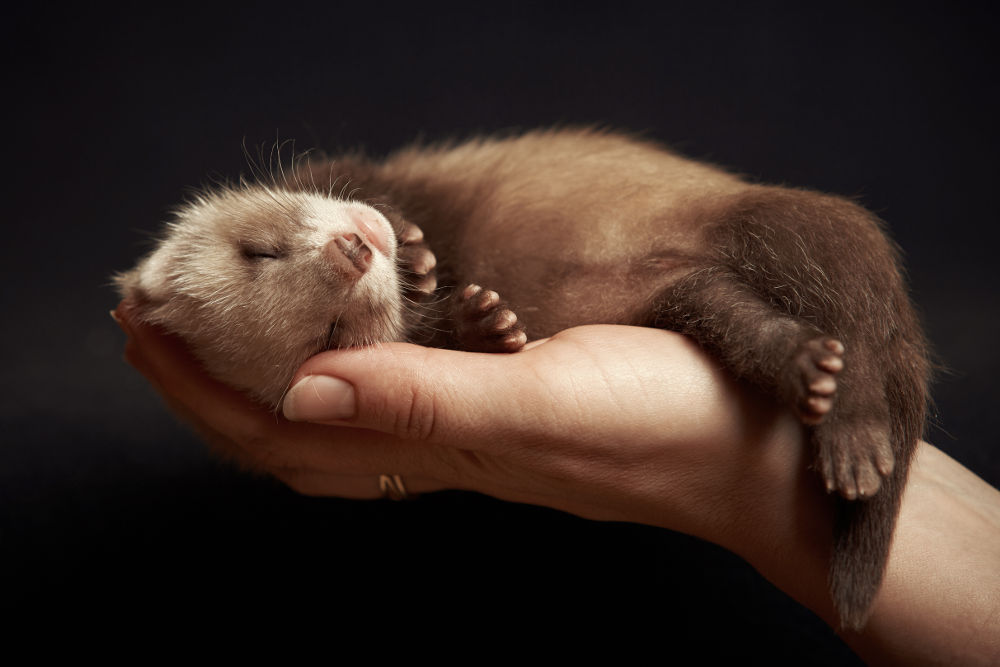
Ferrets are domesticated descendants of the European polecat. They were originally bred for hunting small prey, such as rabbits, and were used for this purpose in many parts of Europe, including England and France. Ferrets have been domesticated for hundreds of years and are now kept as pets in many countries around the world. Ferrets can make good pets, but they require a lot of time, effort, and attention from their owners. They are active, curious, and playful animals that need plenty of mental and physical stimulation to stay happy and healthy. Ferrets are also social animals and do best when they have regular interaction with their human companions.
Ferrets have a strong prey drive and can be destructive if they don't have enough to do, so they need a secure and appropriately-sized space to live and play in. They are also prone to certain health problems, such as dental issues, and require regular veterinary care. Ferrets are intelligent animals and are known for their curiosity and playfulness. They are able to learn and perform various behaviors and tricks and can be trained to do things like use a litter box, fetch, and come when called.
Ferrets have an excellent memory and are able to quickly learn routines and habits. They can also solve problems and figure out how to get what they want, such as finding a way to get into a toy box or escape from a cage. However, it's important to note that ferrets are not as trainable as some other domesticated animals, such as dogs. They have a shorter attention span and can be easily distracted, so training may require more patience and repetition. In order to own a ferret in Washington, the ferret must be vaccinated against rabies.
Savannah monitors
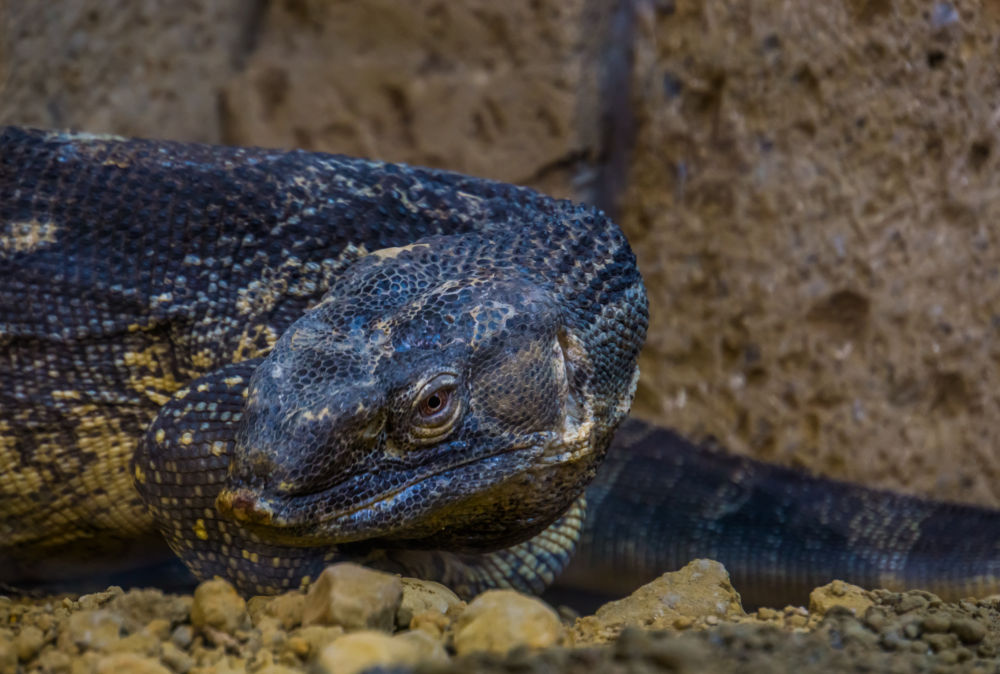
Savannah monitors are a type of reptile that belongs to the monitor lizard family. They are native to sub-Saharan Africa, where they can be found in a variety of habitats, including savannas, grasslands, and forests. These lizards are known for their strong build, long tail, and distinctive banded patterns on their skin.
Savannah monitors are omnivorous, meaning they eat both plants and animals. In the wild, they tend to feed on insects, small mammals, birds, and eggs. They are also known to eat fruit, vegetables, and other plant material. In captivity, Savannah monitors can be fed a diet of insects, such as crickets and mealworms, as well as some vegetables and a small amount of fruit.
Savannah monitors are known to be intelligent and curious animals, and they can make interesting and rewarding pets for experienced reptile owners. However, they require a large enclosure and a specific diet and care regimen, and they can be quite expensive to purchase and maintain. They also have a lifespan of about 10-15 years, so owning a Savannah monitor is a long-term commitment. Savannah monitors can be friendly and social animals, but they can also be quite unpredictable and may exhibit aggressive behavior if they feel threatened or stressed. These lizards are known to be intelligent and curious, and they can be trained to a certain extent, but they should always be handled with caution and respect.
In order to prevent aggression in Savannah monitors, it is important to handle them regularly and gently from a young age. This can help them become accustomed to human interaction and reduce their fear of people. It is also important to provide them with a large, enriching enclosure that includes plenty of hiding spots and climbing opportunities.
Hedgehog

Hedgehogs can make interesting and unusual pets, but they have specific care requirements that potential owners should consider before bringing one into their home. There are several variations of hedgehogs but the ones most often kept as pets are the African pygmy hedgehogs. Hedgehogs are omnivorous, meaning they can eat both plant and animal-based foods. In the wild, hedgehogs eat insects, worms, and other small animals, as well as fruit and vegetables.
A good diet for a pet hedgehog should include high-quality, commercial hedgehog food as the main source of nutrition. These foods are formulated specifically for hedgehogs and are nutritionally balanced to meet their needs. They should be fed in small amounts on a daily basis, as hedgehogs have a tendency to become overweight if they are overfed.
In addition to commercial hedgehog food, hedgehogs can be fed a small number of vegetables, such as spinach, kale, and other leafy greens, as well as small amounts of fruit. It's important to avoid feeding them avocado, as it can be toxic to hedgehogs. It's also a good idea to supplement their diet with live insects, such as mealworms or crickets, to provide them with a source of protein.
They are naturally solitary animals and don't need companionship in the form of other hedgehogs. Because of their solitary nature, they can take a while to warm up to humans. However, with time and patience, they can become quite trusting toward humans.
Wolf hybrid
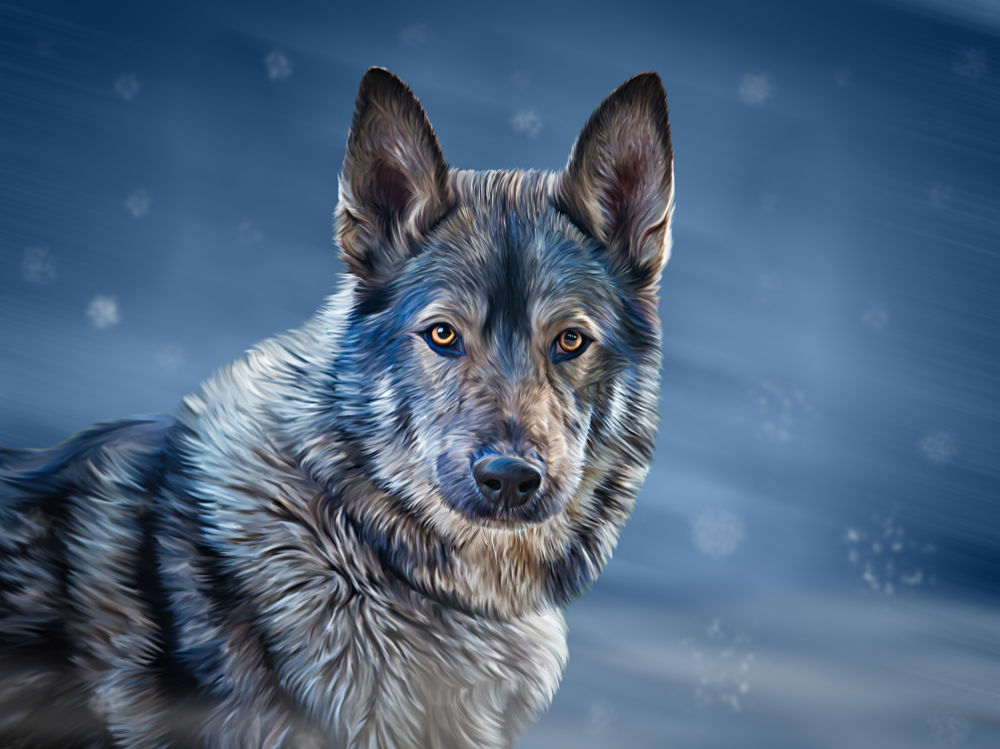
It is generally not recommended to keep wolf hybrids as pets. Wolves and domesticated dogs are different species, and wolf hybrids may exhibit behaviors that are not suitable for a domestic setting. They may be unpredictable, challenging to train, and may not be as socialized to humans as domesticated dogs. They may also exhibit behaviors such as howling, digging, or attempting to escape.
There are different generations of wolf hybrids, which refer to the number of wolf ancestors an animal has in its family tree. The generations are typically referred to as "F" followed by a number, with "F1" being the first generation, "F2" being the second generation, and so on. For example, an F1 wolf hybrid would have one wolf parent and one domesticated dog parent, while an F2 wolf hybrid would have an F1 wolf hybrid parent and a domesticated dog parent.
The characteristics of wolf hybrids can vary depending on their generation, with animals that are closer to pure wolves tending to exhibit more wolf-like behaviors and physical characteristics. However, it is important to note that wolf hybrids are not domesticated animals and may exhibit behaviors that are not suitable for a domestic setting, regardless of their generation. Wolves are generally considered to be highly intelligent animals, and wolf hybrids may inherit some of this intelligence. However, it is important to understand that wolf hybrids are not domesticated animals and may not behave like domesticated dogs. So while yes, they are highly intelligent, they are not intelligent in the same way as we often expect dogs to be.
Things to remember
There are several things to consider when adopting an exotic animal. It is important to research the specific needs of the animal and ensure that you can provide the necessary care, including a suitable habitat, diet, and medical attention. Some exotic animals may have complex social, behavioral, and environmental needs and may require specialized care or training.
Conclusion
In conclusion, it is important to note that owning exotic animals can be a rewarding experience, but it also comes with a great deal of responsibility. There are a few potential benefits to owning exotic or rare animals. Some people may enjoy the uniqueness or novelty of owning an exotic pet, as these animals may not be commonly kept as pets. Additionally, some people may find a sense of accomplishment in being able to properly care for and provide a good home for an exotic animal.
However, it is important to note that these potential benefits should be carefully weighed against the potential risks and responsibilities of exotic pet ownership. Legal exotic animals may have specialized care requirements and can be difficult to properly care for, and owning an exotic pet may also carry legal risks and social stigma. It is important to thoroughly research the specific needs and challenges of the animal you are considering and to carefully consider whether you are prepared to meet those needs and take on the associated responsibilities.
FAQ
What animals does Washington have?
Washington State is home to a diverse array of wildlife due to its varied ecosystems, which include coastal areas, rainforests, mountains, and grasslands. Some of the most notable animals found in Washington are:
Black bears: Black bears are the most common bear species in Washington and can be found in forests, mountains, and wooded areas across the state.
Grizzly bears: Although much less common than black bears, grizzly bears can be found in the remote areas of the North Cascades.
Elk: Two subspecies of elk, Roosevelt elk and Rocky Mountain elk, inhabit Washington's forests, mountains, and grasslands.
Mule deer: Mule deer are commonly found in the eastern part of the state, particularly in the shrub-steppe habitat.
White-tailed deer: These deer are more common in the forests of eastern Washington and in some parts of western Washington.
Mountain goats: Mountain goats inhabit the alpine areas of the Cascade Range and the Olympic Mountains.
Bighorn sheep: Found in the eastern part of the state, bighorn sheep inhabit the steep, rocky terrain of the Cascade Range and some areas along the Columbia River.
Gray wolves: After being reintroduced to the state, gray wolves can be found primarily in the northeastern and north-central parts of Washington.
Coyotes: Coyotes are widespread throughout Washington and can be found in a variety of habitats, including forests, grasslands, and even urban areas.
Bobcats: Bobcats are well-adapted to a variety of habitats, including forests, swamps, and grasslands, and can be found throughout Washington.
River otters: River otters inhabit the freshwater and coastal habitats of Washington, including rivers, lakes, and estuaries.
Harbor seals: Common along the Washington coast, harbor seals can be found in the Puget Sound and the Pacific Ocean.
Bald eagles: Bald eagles can be found throughout Washington, particularly near water sources such as rivers, lakes, and coastal areas.
What animals live in lake washington?
Lake Washington, located between Seattle and Bellevue in Washington State, is home to a variety of aquatic and semi-aquatic animal species. Some of the animals that inhabit or frequent Lake Washington include:
Fish species:
Largemouth bass,
Smallmouth bass,
Yellow perch,
Black crappie,
Brown bullhead,
Rainbow trout,
Cutthroat trout,
Kokanee salmon (landlocked sockeye salmon),
Chinook salmon (king salmon),
Coho salmon (silver salmon),
Steelhead trout (anadromous form of rainbow trout),
Common carp
Birds:
Bald eagles,
Osprey,
Great blue herons,
Common mergansers,
Mallards,
Canada geese,
Various species of gulls, ducks, and other waterfowl
Mammals:
North American river otters,
American beavers,
Muskrats
Reptiles and amphibians:
Western painted turtles,
Red-eared sliders (non-native species),
Northwestern garter snakes,
Rough-skinned newts,
Pacific tree frogs
Invertebrates:
Freshwater snails,
Crayfish,
Various species of aquatic insects, such as dragonfly and damselfly nymphs, mayflies, and caddisflies
What animal is most likely to kill you in Washington?
While wildlife encounters in Washington State are generally safe, there are a few animals that could pose potential risks to humans. However, it's essential to note that the chances of being killed by an animal in Washington are extremely low, especially when compared to other causes of death. Taking proper precautions and respecting wildlife can further minimize the risks.
Some animals in Washington State that could potentially pose a danger to humans include:
Cougars (mountain lions): Although rare, cougars have been responsible for a few fatal attacks on humans in the past. To minimize the risk of a cougar encounter, avoid hiking alone, keep children close, and never approach or feed a cougar.
Black bears: Fatal black bear attacks are extremely rare, but they can still be dangerous if they feel threatened or cornered. It is essential to store food properly, make noise while hiking, and give bears plenty of space if encountered.
Venomous snakes: Washington is home to only one venomous snake species, the Western rattlesnake. While bites can be dangerous, fatalities are infrequent, especially if medical attention is sought promptly. To avoid snakebites, watch where you step, wear appropriate footwear, and never handle or disturb a snake.
Moose: Although generally not aggressive, moose can be dangerous if they feel threatened, especially during the mating season or when protecting their calves. Give moose plenty of space and never approach them.

